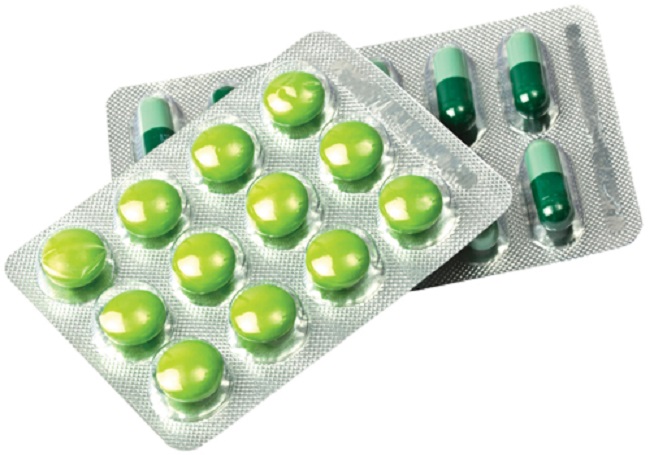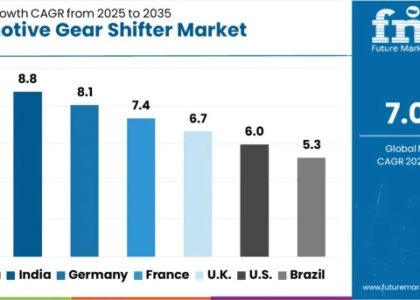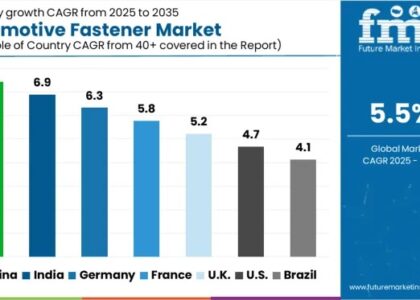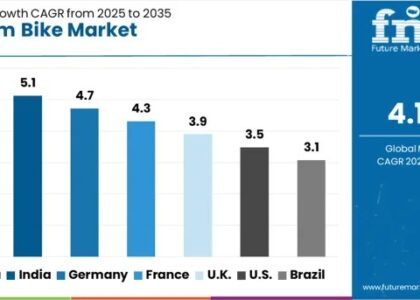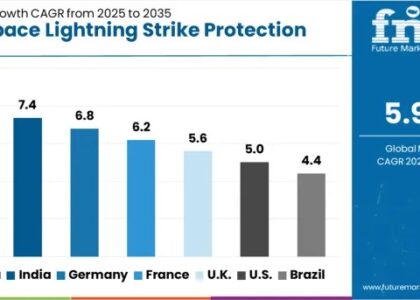In 2023, the blister packaging market is forecasted to reach a valuation of US$ 13,953.6 million, with expectations to soar to US$ 26,940.0 million by 2033. Anticipated sales growth for blister packaging indicates a robust Compound Annual Growth Rate (CAGR) of 6.8% throughout the forecast period. This upward trajectory reflects the enduring demand for blister packaging solutions, driven by factors such as increased consumer preference for convenient and tamper-evident packaging, stringent regulations in pharmaceutical and healthcare sectors, and advancements in packaging technology. As industries strive for enhanced product protection and presentation, blister packaging stands poised to witness sustained expansion in the global market landscape.
Blister packs integrated with digital technology offer features such as dosage reminders, time-temperature indication, and product quality feedback, aligning with the convenience expectations of today’s modern consumers. The increasing inclination of tech-savvy consumers toward pharmaceutical packaging with digital capabilities is anticipated to boost the sales of blister packs.
Eminent for its role as a major pharmaceutical hub, the Asia Pacific region, particularly India, stands out as a leading manufacturer and exporter in the industry. The advantageous low production and packaging costs for manufacturers based in India are anticipated to drive an expansion of their manufacturing capacities. According to the IBEF Organization, India’s pharmaceutical exports reached a substantial US$ 16.2 billion in 2019. Moreover, heightened investments from both private and government sectors in pharmaceutical research and development within India have significantly boosted drug production. The concurrent enhancement of healthcare infrastructure and increased pharmaceutical spending further fuels the demand for blister packaging in the region.
The global pharmaceutical sector’s increasing production output has created a significant demand for pharmaceutical packaging, particularly blister packs. The precise packaging capabilities of blister packaging formats, such as carded and clamshell blisters, make them preferred choices for pharmaceutical companies.
Request Sample: https://www.futuremarketinsights.com/reports/sample/rep-gb-4648
Child-resistant and senior citizen-friendly packaging formats are gaining prominence in the blister packaging market. Packaging manufacturers are focusing on designing and manufacturing blister packs with child-resistant and tamper-evident features. To ensure safety and prevent accidental poisoning in children.
The market is also witnessing the emergence of smart blister packs. Incorporating digital technology, these blister packs provide functionalities. Such as dosage reminders, time temperature indications, and product quality indications.
Thermoforming technology is expected to dominate the blister packaging market, accounting for more than three-fourths of the market share in the next decade. The segment is projected to expand by 1.9 times its value from 2021 to 2031.
Plastics play a dominant role in blister packaging, holding a significant share of 43.8% in 2022. Plastics offer cost-effectiveness, lightweight properties, and high-volume manufacturing capabilities, making them preferable over alternatives like glass or metal.
The use of biodegradable plastics in blister packaging is expected to reduce environmental pollution. The consumption of plastic blister packs is predicted to reach over 2.8 million tons by the end of 2026.
In the regional analysis, the United States accounted for a substantial share of 27.4% in 2022. The United States pharmaceutical industry has experienced significant growth due to rising per capita consumption and expenditure on drugs. As well as the presence of prominent pharmaceutical companies.
Market Drivers:
- Growing Demand for Pharmaceuticals: The pharmaceutical industry’s expansion, particularly in emerging markets, is a significant driver for blister packaging. Blister packs offer tamper resistance, extended shelf life, and protection against contamination, meeting regulatory requirements.
- Rising Need for Convenient Packaging: Blister packs are preferred for their convenience in handling and dispensing products. This is especially true for consumer goods like over-the-counter medications, healthcare products, and personal care items.
- Increasing Focus on Product Protection: Blister packaging provides excellent protection against external factors such as moisture, oxygen, and light, ensuring product integrity. This is crucial for perishable goods, sensitive electronics, and medical devices.
- Growth in Food and Beverage Industry: With the rise in demand for packaged food and beverages, blister packaging offers an attractive solution due to its ability to maintain freshness and extend product shelf life.
- Advancements in Packaging Technology: Innovations in materials, design, and manufacturing processes have enhanced the versatility and functionality of blister packs. This includes features like child-resistant and senior-friendly packaging, as well as eco-friendly materials.
- Regulatory Compliance: Stringent regulations regarding product safety, labeling, and tamper evidence drive the adoption of blister packaging, particularly in industries like pharmaceuticals and food.
Market Restraints:
- High Initial Investment: Setting up blister packaging lines can require significant capital investment, which may deter small and medium-sized enterprises from adopting this packaging solution.
- Environmental Concerns: Traditional blister packaging often involves the use of non-recyclable materials such as PVC, leading to environmental concerns due to waste generation. However, there’s a growing trend towards eco-friendly alternatives, mitigating this restraint to some extent.
- Limited Flexibility: Blister packaging can be less flexible compared to other packaging formats like pouches or bottles, making it less suitable for irregularly shaped or large-sized products.
- Complexity in Recycling: Recycling blister packaging can be challenging due to the need to separate different materials like plastic, foil, and paper. This complexity adds to the overall cost and environmental impact.
- Potential for Product Damage: Improper handling during packaging or transportation can lead to product damage, especially for fragile or delicate items, which may increase returns and affect brand reputation.
- Regulatory Changes: Changes in regulations related to packaging materials, labeling requirements, or recycling standards can pose challenges for blister packaging manufacturers, requiring them to adapt quickly to remain compliant.
Recent Developments
- Amcor PLC, a worldwide packaging firm, deploys the recyclable AmSky blister system for healthcare packaging in April 2021. Its goal is to satisfy the strict criteria of regulated and specialized pharmaceutical packaging.
- TerraCycle, an innovative recycling company, recognized Honeywell’s Aclar barrier film blisters as technically recyclable for polyethylene terephthalate glycol (PETG) and polyvinyl chloride (PVC)-based blisters in May 2022.
- Pharmaworks, a developer of blister packaging technology for the consumer products, pharmaceutical, and contract packaging industries, was bought by ProMach. A provider of packaging machinery solutions, in March 2020. This program aims to broaden ProMach’s product portfolio and blister packaging applications.
The Major Key Players Are:
- Amcor plc
- Constantia Flexibles GmbH
- Sonoco Products Company
- Winpak Ltd.
- West Rock Company
- Honeywell International, Inc
- Uflex Ltd
- Tekni-Plex, Inc
- ACG Pharmapack Pvt. Ltd.
- Klockner Pentaplast Group
- SteriPack Group
Buy Now/Purchase: https://www.futuremarketinsights.com/checkout/4648
Key Segmentations:
by Product Type:
- Clamshell
- Carded
by Technology Type:
- Cold Forming Technology
- Thermoforming Technology
by Material Type:
- Plastic
- PVC/Vinyl
- PET
- PE
- Others
- Aluminum
- Paper & Paperboard
- Others
by End Use:
- Food
- Pharmaceuticals
- Veterinary & Nutraceuticals
- Medical Devices
- Electronics & Electricals
- Industrial Goods
- Consumer Goods
By Region:
- North America
- Latin America
- Western Europe
- Eastern Europe
- Asia Pacific Excluding Japan (APEJ)
- Japan
- The Middle East & Africa (MEA)
About Future Market Insights (FMI)
Future Market Insights, Inc. (ESOMAR certified, recipient of the Stevie Award, and a member of the Greater New York Chamber of Commerce) offers profound insights into the driving factors that are boosting demand in the market. FMI stands as the leading global provider of market intelligence, advisory services, consulting, and events for the Packaging, Food and Beverage, Consumer, Technology, Healthcare, Industrial, and Chemicals markets. With a vast team of over 5000 analysts worldwide, FMI provides global, regional, and local expertise on diverse domains and industry trends across more than 110 countries.
Contact Us:
Future Market Insights Inc.
Christiana Corporate, 200 Continental Drive,
Suite 401, Newark, Delaware – 19713, USA
T: +1-845-579-5705
For Sales Enquiries: sales@futuremarketinsights.com
Website: https://www.futuremarketinsights.com
LinkedIn| Twitter| Blogs | YouTube


